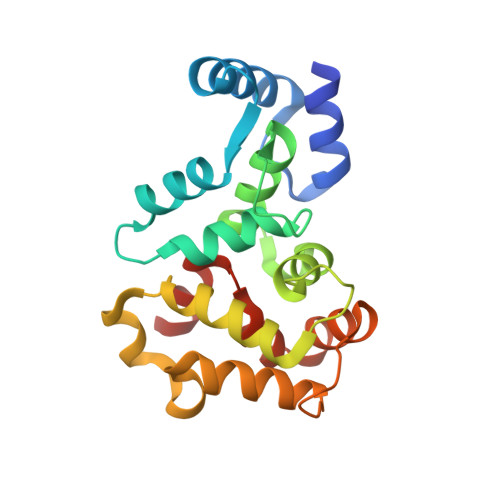A highly conserved cysteine of neuronal calcium-sensing proteins controls cooperative binding of Ca2+ to recoverin.
Ranaghan, M.J., Kumar, R.P., Chakrabarti, K.S., Buosi, V., Kern, D., Oprian, D.D.(2013) J Biological Chem 288: 36160-36167
- PubMed: 24189072
- DOI: https://doi.org/10.1074/jbc.M113.524355
- Primary Citation of Related Structures:
4M2O, 4M2P, 4M2Q, 4MLW - PubMed Abstract:
Recoverin, a 23-kDa Ca(2+)-binding protein of the neuronal calcium sensing (NCS) family, inhibits rhodopsin kinase, a Ser/Thr kinase responsible for termination of photoactivated rhodopsin in rod photoreceptor cells. Recoverin has two functional EF hands and a myristoylated N terminus. The myristoyl chain imparts cooperativity to the Ca(2+)-binding sites through an allosteric mechanism involving a conformational equilibrium between R and T states of the protein. Ca(2+) binds preferentially to the R state; the myristoyl chain binds preferentially to the T state. In the absence of myristoylation, the R state predominates, and consequently, binding of Ca(2+) to the non-myristoylated protein is not cooperative. We show here that a mutation, C39A, of a highly conserved Cys residue among NCS proteins, increases the apparent cooperativity for binding of Ca(2+) to non-myristoylated recoverin. The binding data can be explained by an effect on the T/R equilibrium to favor the T state without affecting the intrinsic binding constants for the two Ca(2+) sites.
- From the Department of Biochemistry and.
Organizational Affiliation:

















